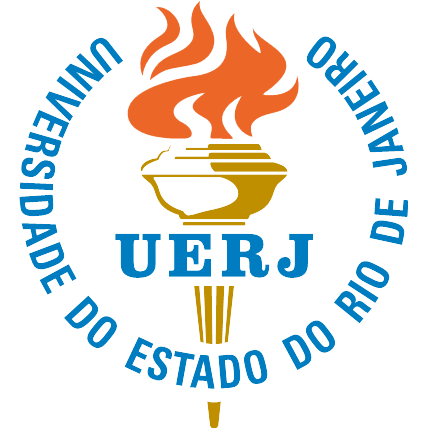Violência e maus tratos contra a pessoa idosa: representações sociais de jovens, adultos e idosos [Violence and abuse against the elderly: social representations of young people, adults and the elderly] [Violencia y maltrato contra la persona mayor: representaciones sociales de jóvenes, adultos y ancianos]
DOI:
https://doi.org/10.12957/reuerj.2018.31645Palavras-chave:
idoso, violência, maus tratos, saúdeResumo
Objetivo: analisar as representações sociais sobre violência e maus tratos contra a pessoa idosa, construídas por jovens, adultos e idosos. Método: estudo exploratório de abordagem qualitativa, utilizando o aporte teórico das representações sociais, realizado com 150 participantes, escolhidos aleatoriamente, no período de março/setembro de 2015. Dados foram coletados por entrevista semiestruturada utilizando estímulos indutores: violência e maus tratos contra pessoa idosa. O material empírico foi organizado em dois corpora e processados com o auxílio do software IRaMuTeQ®. Os dados processados apontaram para o estimulo violência três classes semânticas; para maus tratos, duas classes. O projeto foi aprovado em Comitê de ética e pesquisa (protocolo 0516/14). Resultados: jovens falam de tipos de violência; adultos falam sobre contravenções relacionadas; idosos associam dimensões de cunho afetivo. Conclusão: espera-se que os achados contribuam para dimensionamento de ações educativas-protetivas para efetivação de políticas públicas ao idoso.
ABSTRACT
Objective: to examine social representations constructed by young people, adults and the elderly regarding violence and abuse against older people. Method: this exploratory, qualitative study used social representations theory in the period from March to September 2015 with 150 randomly chosen participants. Data were collected by semi-structured interview using two stimulus-terms: violence and abuse against elderly persons. The empirical material was organized into two corpuses and processed with IRaMuTeQ® software. The processed data pointed to three semantic classes for the stimulus-term violence, and two for the stimulus-term abuse. The project was approved by the research ethics committee (Protocol 0516/14). Results: younger participants mentioned types of violence; adults talked about violence-related offenses; and the elderly associated violence and abuse with dimensions of affect. Conclusion: it is hoped that the findings will contribute to scaling educational and protective actions for effective application of policies for the elderly.
RESUMEN
Objetivo: analizar las representaciones sociales sobre violencia y maltrato contra la persona mayor, construidas por jóvenes, adultos y ancianos. Método: estudio exploratorio de enfoque cualitativo, utilizando el aporte teórico de las representaciones sociales, realizado con 150 participantes, elegidos al azar, en el período de marzo / septiembre de 2015. Los datos fueron recolectados por entrevista semiestructurada utilizando estímulos inductores: violencia y maltrato contra el anciano. El material empírico fue organizado en dos corpus y procesado con la ayuda del software IRaMuTeQ®. Los datos procesados apuntaron hacia el estímulo violencia, tres clases semánticas; hacia maltratos, dos clases. El proyecto fue aprobado en el Comité de ética e investigación (protocolo 0516/14). Resultados: jóvenes hablan sobre tipos de violencia; los adultos hablan sobre contravenciones relacionadas; los ancianos asocian dimensiones de carácter afectivo. Conclusión: se espera que los hallazgos contribuyan a dimensionar acciones educativas-protectoras para volver efectivas las políticas públicas en cuanto al anciano.
Downloads
Publicado
Como Citar
Edição
Seção
Licença
Ao publicar na Revista Enfermagem UERJ, os autores declaram que o trabalho é de sua exclusiva autoria e assumem, portanto, total responsabilidade pelo seu conteúdo.
Os autores retêm os direitos autorais de seu artigo e concordam em licenciar seu trabalho usando uma Licença Pública Internacional Creative Commons Atribuição (CC BY), aceitando assim os termos e condições desta licença (https://creativecommons.org/licenses/by/4.0/legalcode.en), que permite que o material criado pelo autor pode ser distribuído, copiado e exibido por terceiros. O trabalho original deve ser citado e apresentar um link para o artigo disponível no site da revista em que foi publicado.
Os Direitos Autorais dos artigos publicados na Revista Enfermagem UERJ pertencem ao(s) seu(s) respectivo(s) autor(es), com os direitos de primeira publicação cedidos à Revista Enfermagem UERJ, com o trabalho simultaneamente licenciado sob uma Licença Creative Commons CC BY, a qual permite o compartilhamento do trabalho com reconhecimento da autoria e publicação inicial nesta revista
Os autores concedem à Revista Enfermagem UERJ o direito de primeira publicação, de se identificar como publicadora original do trabalho e concedem à revista uma licença de direitos não exclusivos para utilizar o trabalho das seguintes formas:
- Vender e/ou distribuir o trabalho em cópias impressas e/ou em formato eletrônico;
- Distribuir partes e/ou o trabalho como um todo com o objetivo de promover a revista por meio da internet e outras mídias digitais e impressas;
- Gravar e reproduzir o trabalho em qualquer formato, incluindo mídia digital.
Em consonância com as políticas da revista, a cada artigo publicado será atribuída uma licença Creative Commons Atribuição (CC BY).









